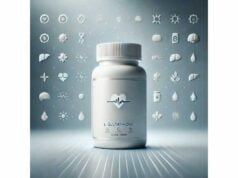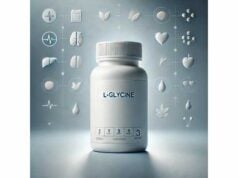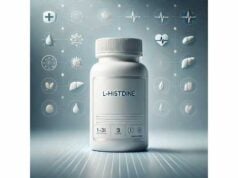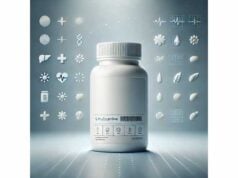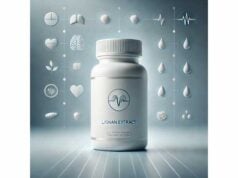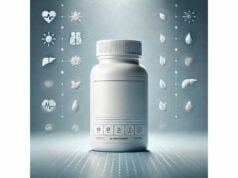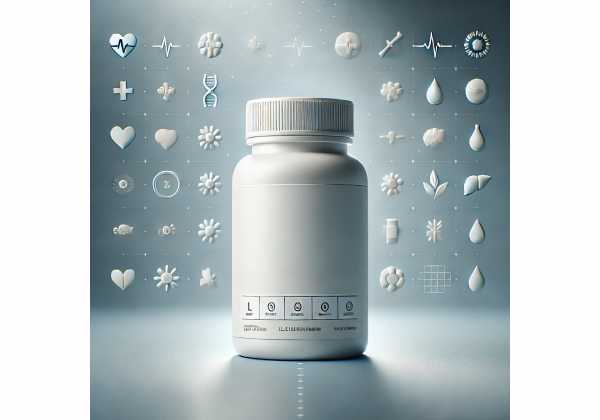
L-glutamine is the most abundant free amino acid in human blood and muscle. Your body makes it, yet demand can outpace supply during heavy training, illness, or injury. In cells that turn over quickly—like those lining your gut and the immune system—glutamine doubles as a preferred fuel and a building block for nucleotides and antioxidants. Athletes hear about glutamine for “recovery,” clinicians use it inside carefully designed nutrition formulas, and people with digestive issues sometimes try it for symptom control. The evidence is nuanced: some outcomes are well supported in specific contexts (for example, postinfectious IBS with increased gut permeability), while others (like routine performance boosts in well-nourished athletes) are mixed or underwhelming. This guide translates the science into practical steps—what glutamine does, when it helps, how to dose it, who should avoid it, and how to combine it with diet and training so you actually notice a difference.
Key Insights
- Supports gut lining and immune cells that rely on glutamine as a fuel source.
- Evidence suggests benefit for postinfectious IBS with increased intestinal permeability.
- Common supplement range: 5–15 g/day, often split (for example, 5 g taken 1–3 times daily).
- Avoid self-supplementation in severe liver failure, advanced kidney disease, or critical illness without medical supervision.
Table of Contents
- What it is and how it works
- Where it helps and where it does not
- How to use it day to day
- Dose: how much and when
- Safety, side effects, and who should avoid
- What the research says today
What it is and how it works
Glutamine is one of the twenty amino acids that build proteins. In its free form it circulates in plasma and acts as a nitrogen shuttle, moving ammonia safely between tissues. Cells convert glutamine into glutamate and then to α-ketoglutarate, feeding the tricarboxylic acid (TCA) cycle for energy and biosynthesis. This “carbon-plus-nitrogen” versatility explains why fast-growing tissues—intestinal epithelium, lymphocytes, fibroblasts—consume a lot of glutamine when stressed.
In the gastrointestinal tract, enterocytes (gut-lining cells) oxidize glutamine for ATP and use it to synthesize nucleotides needed for repair. When infections, endurance exercise, NSAIDs, or radiation therapy disrupt the mucosal barrier, local glutamine demand increases. Meeting that demand may support tight junction integrity and normal barrier function.
In the immune system, glutamine fuels lymphocytes and macrophages and supports glutathione production, a central cellular antioxidant. During acute illness, trauma, or burns, plasma glutamine can fall; in clinical nutrition, formulas sometimes add glutamine (often as a dipeptide such as alanyl-L-glutamine) to address this temporary shortfall.
In skeletal muscle, glutamine is plentiful, but topping up with supplements does not automatically translate into more strength or hypertrophy. Muscle growth hinges more on total protein intake, adequate leucine, training stimulus, energy balance, and sleep. Glutamine’s role is supportive—buffering nitrogen balance, providing carbon skeletons—not a magic switch for performance.
In the nervous system, glutamine sits upstream of the glutamate–GABA cycle. That does not mean oral glutamine directly “boosts neurotransmitters.” The brain regulates glutamate closely, and most ingested glutamine is handled by the gut and liver before any reaches the central nervous system.
Forms you will see:
- Free L-glutamine powder or capsules. Widely available; neutral taste mixes well with water.
- Alanyl-L-glutamine (a dipeptide). Highly soluble and stable; used in some sport drinks and clinical nutrition because it dissolves easily and can improve plasma glutamine availability compared with equal amounts of free glutamine.
- Enteral/Parenteral formulas. In hospitals, specialized feeds or IV nutrition may include glutamine (often as dipeptides) under protocol.
Takeaway: glutamine is metabolically central, especially for gut and immune function. The more stressed those systems are, the more likely targeted glutamine is to matter.
Where it helps and where it does not
Contexts where glutamine shows promise
- Postinfectious IBS with increased intestinal permeability (IBS-D). In adults who develop IBS symptoms after an enteric infection and show elevated permeability on testing, oral glutamine has been shown to reduce symptom scores, normalize stool form, and improve barrier markers when taken regularly for several weeks. This appears to be a targeted use case: the benefit is tied to a “leaky barrier” phenotype rather than all types of IBS.
- Oral mucositis risk management (select oncology settings). Mucositis is a painful inflammation of the GI lining from chemotherapy or radiation. Some clinics use glutamine (often “swish and swallow”) as part of supportive care protocols to help patients maintain oral intake and reduce severity. Practice patterns vary by cancer type, regimen, and local guideline; coordination with the oncology team is essential.
- Surgical and critical care nutrition (protocol-specific). In patients who cannot be fed enterally and require exclusive parenteral nutrition, adding glutamine as a dipeptide may be considered to support the stressed gut and immune system—again, within modern guidelines and with attention to contraindications.
- High-volume endurance training in heat or during energy deficit. When training stress is extreme, immune and GI strain rise. Glutamine can be part of a broader plan (adequate energy, carbohydrate periodization, hydration, sleep) to support recovery and gut comfort. It is not a standalone ergogenic aid but may help some athletes tolerate load better.
Contexts where claims outpace evidence
- Universal muscle growth or strength gains. Meta-analyses and fact-sheet summaries find little to no consistent improvement in aerobic performance, strength, or body composition from glutamine alone when protein intake is already sufficient.
- General “brain booster.” Because the gut and liver process most dietary glutamine, it does not function like caffeine or creatine in the brain.
- “Fixes” for every gut condition. Glutamine is not a cure-all for bloating, SIBO, IBD, or food intolerance. Benefits, when present, tend to be greatest in permeability-related phenotypes or when nutrition is compromised.
Why results differ
- Phenotype matters. People with barrier disruption, high training stress, or catabolic illness respond differently from well-nourished recreational lifters.
- Formulation and dose. Free glutamine behaves differently from dipeptides; split doses with meals often work better than large single boluses on an empty stomach.
- What else you are doing. Without adequate calories, protein, and sleep, glutamine cannot make up the gap.
Bottom line: use glutamine where the biology points to a plausible bottleneck (gut barrier stress, clinical catabolism) and where trials show benefit. Skip it as a universal fix or performance enhancer.
How to use it day to day
Start with the big rocks
- Diet first. Aim for total protein of ~1.2–2.0 g/kg/day from varied sources (dairy, eggs, fish, soy, legumes, lean meats). This naturally supplies ample glutamine inside whole proteins.
- Training, sleep, and stress. If your recovery is poor due to under-eating or five hours of sleep, a scoop of glutamine will not solve it.
- Hydration and carbs around training. Especially for endurance or mixed modal athletes, proper carbohydrate timing protects gut function during long or hot sessions.
If you decide to try glutamine
- Purpose: Define a clear goal—e.g., reduce postinfectious IBS-D symptoms; support appetite and oral intake during mucositis care under oncology guidance; trial for gut comfort during heat training.
- Form: Free L-glutamine is the common choice for home use. If you struggle with solubility or want smaller volumes, alanyl-L-glutamine powder mixes easily in cold water.
- Timing: Take with meals or a carb-containing snack to improve tolerance and reduce the chance of GI upset. For training, pre- or post-workout timing is optional; the total daily amount is more important.
- Titration: Begin with 5 g once daily for three days, then 5 g twice daily. If well tolerated and your goal warrants it, increase to 5 g three times daily. Give the trial at least two weeks before judging.
- Stacking: Pair with your normal protein intake; creatine, beta-alanine, or electrolytes can live alongside glutamine without known issues. Avoid layering multiple “gut” powders at once when you are trying to learn what actually helps.
How to judge success
- IBS-D: track stool form (Bristol scale), frequency, urgency, abdominal pain, and post-meal comfort across 2–8 weeks.
- Training: track GI symptoms during long sessions, perceived recovery, appetite, and ability to hit target calories and protein.
- Oncology or surgical care: follow your team’s metrics—oral intake, weight maintenance, mucositis grading, and lab markers.
When to stop
- If you do not see any measurable benefit after 2–4 weeks, or you experience persistent side effects (e.g., bloating, nausea), discontinue and focus on diet and training fundamentals or explore alternative strategies with your clinician or dietitian.
Dose: how much and when
There is no single “correct” dose for everyone because goals and contexts differ. The following ranges reflect how glutamine is commonly used:
- General wellness or gut support trial (adults): 5–15 g/day, split as 5 g taken 1–3 times daily with meals.
- Postinfectious IBS-D with increased permeability (adult protocol used in research): 15 g/day (5 g three times daily) for 8 weeks, then reassess.
- Endurance or high-stress blocks: 5–10 g/day, split dosing on training days; consistency over weeks matters more than exact timing.
- Clinical nutrition (under supervision): Doses and forms vary. In exclusive parenteral nutrition, glutamine is usually provided as dipeptides within protocol; use is individualized and contraindications apply.
Practical timing rules
- Take with food to reduce GI complaints and support absorption.
- For “swish and swallow” use in mucositis care, follow your oncology team’s exact directions on mixing, contact time, and swallowing vs expectorating.
- Avoid large boluses on an empty stomach if you are prone to nausea.
How long to use it
- Targeted trials: 2–8 weeks, then taper or discontinue if goals are met.
- Athletic blocks: throughout a mesocycle (3–6 weeks), then pause and evaluate.
- Clinical care: for as long as the indication exists and your care team recommends.
Special forms and notes
- Alanyl-L-glutamine dipeptide is more soluble and can yield higher short-term plasma glutamine levels than equal grams of free glutamine. This can be helpful in beverages and in clinical settings; typical servings provide 2–10 g dipeptide (which delivers slightly less than that amount of elemental glutamine).
- Capsules vs powder: Powder is economical and easier for higher intakes; capsules suit those traveling or using smaller daily amounts.
What not to do
- Do not exceed high daily intakes for long periods without medical oversight.
- Do not use glutamine to “fix” restrictive diets, chronic under-eating, or untreated GI diseases.
- Do not combine with stimulants to chase “focus”—that is not glutamine’s mechanism.
Safety, side effects, and who should avoid
Typical side effects (usually mild and dose-related)
- Bloating, gas, stomach discomfort, or nausea—often improved by taking smaller, split doses with meals.
- Rarely, headache or fatigue in sensitive users.
- Taste aversion if mixed in plain water; using flavored carbohydrate drinks can help.
Caution and contraindications
- Severe liver disease or hyperammonemia risk: Because glutamine transports nitrogen, individuals with advanced hepatic failure or known ammonia-handling disorders should not self-supplement.
- Advanced kidney disease: Discuss any amino acid supplement with your nephrologist; nitrogen load may need restriction.
- Critical illness, shock, multiorgan failure: High-dose glutamine given early in critical illness has been associated with harm in this context. Any use must follow current hospital protocols; do not self-administer.
- Active cancer care: Practices vary by regimen and center. Some teams use glutamine for mucositis support, but routine, unsupervised supplementation is not advised. Always coordinate with oncology.
- Seizure disorders or significant neuropsychiatric conditions: Theoretical concerns about glutamate–GABA balance exist; discuss with your neurologist or psychiatrist before use.
- Children, pregnancy, lactation: Stick to food sources unless a clinician prescribes a specific product.
Medication and supplement considerations
- No well-documented, severe drug interactions are typical at common doses, but amino acids can affect absorption of certain oral medications when taken simultaneously. Separate timing by a couple of hours for sensitive meds, and consult your pharmacist.
- If you are already using high-dose protein powders, essential amino acids, or multiple “gut” supplements, keep a simple log so you can identify what helps or harms.
Smart safety habits
- Start low and build.
- Use third-party-tested products when possible, especially if you are an athlete subject to anti-doping rules.
- Reassess every few weeks. If there is no clear benefit, stop.
What the research says today
IBS and gut permeability: In adults with postinfectious IBS-D who demonstrate increased intestinal permeability, an eight-week course of oral glutamine (5 g three times daily) has been shown to reduce global symptom scores and improve stool form and frequency versus placebo, while normalizing laboratory measures of barrier function. This is one of the clearest demonstrations of a phenotype-specific benefit.
Oral mucositis and supportive oncology care: Mucositis management is guided by setting-specific clinical practice guidelines. Some centers include glutamine—often in “swish and swallow” protocols—to help patients maintain oral intake and reduce discomfort. Recommendations differ by regimen, cancer type, and patient status, so decisions belong with the oncology team.
Surgery and parenteral nutrition: In patients who cannot be fed enterally and must receive exclusive parenteral nutrition, certain guidelines allow consideration of glutamine dipeptide supplementation, with explicit exclusions (for example, unresuscitated shock or severe organ failure). The choice depends on the overall clinical picture and the nutrition route.
Critical illness caution: Early, high-dose glutamine given to critically ill patients with multiorgan failure has not improved outcomes and, in some trials, increased mortality. This is why hospital protocols now specify when not to use glutamine. Home supplementation in this setting is inappropriate.
Athletic performance and recovery: For most healthy, well-nourished athletes, glutamine alone does not consistently improve strength, aerobic performance, or body composition. Where athletes sometimes notice a difference is indirect—better GI comfort during long sessions, easier appetite when recovering from heavy blocks, or improved ability to hit calorie and protein targets. Those benefits are real for some individuals but are not guaranteed.
Absorption and forms: Dipeptide forms like alanyl-L-glutamine are more soluble and can produce higher transient plasma glutamine levels than equal amounts of free glutamine. This can be useful in beverages or when large volumes cause GI discomfort.
What it all means for you: Use glutamine strategically. If you have postinfectious IBS-D with evidence of increased permeability, or you are navigating mucositis care with your oncology team, or you need a highly soluble form in a clinical or high-stress athletic context, glutamine can be a practical tool. If your goal is simply “get stronger,” put your effort into total protein, creatine, progressive overload, and sleep before adding glutamine.
References
- Randomised placebo-controlled trial of dietary glutamine supplements for postinfectious irritable bowel syndrome 2019 (RCT)
- MASCC/ISOO clinical practice guidelines for the management of mucositis secondary to cancer therapy 2020 (Guideline)
- A Randomized Trial of Glutamine and Antioxidants in Critically Ill Patients 2013 (RCT)
- ESPEN practical guideline: Clinical nutrition in surgery 2021 (Guideline)
- Dietary Supplements for Exercise and Athletic Performance – Health Professional Fact Sheet 2024 (Overview)
Disclaimer
This guide is educational and does not replace personalized medical advice, diagnosis, or treatment. Talk with a qualified healthcare professional before starting, stopping, or changing any supplement—especially if you have liver or kidney disease, cancer, seizure disorders, are pregnant or breastfeeding, or take prescription medications. If you experience concerning symptoms after using any product discussed here, stop and seek medical care.
If this article was helpful, please consider sharing it on Facebook, X (formerly Twitter), or your preferred platform, and follow us on social media. Your support helps us continue producing clear, balanced health content.

